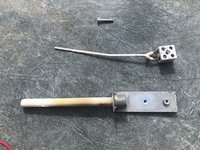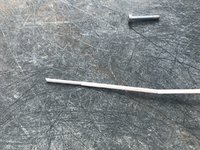Sputnik, how long is the 16a cable? 13a sockets are on 2.5mm cable and a 32a breaker. A long 16a cable still might not be adequate.
Besides this, you were getting to temp and now you aren't, so something has changed.
Have you got access to the relay in the controller? Apparently if these get hot there may be a drop in the current it can pass. Secondhand info from a ceramic arts query of a similar nature. See
https://hotkilns.com/support/pottery-kiln-trouble-shooting-actions/check-power-relay
Has your kiln got bigger gaps or newly cracked bricks?
I would in turn change thermocouple, relay, elements and then maybe try for an aftermarket WiFi PID controller from ebay. I know you don't want to change parts unnecessarily tho.
Also, what cone were you aiming for? It looks like the kiln did the necessary heartwork (all cones down), so perhaps by eyeballing temp & time with that orton info you can get the desired result. Best of luck!



